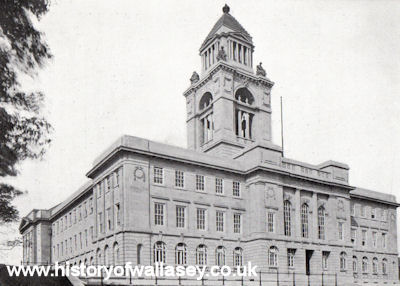 |
Wallasey Town Hall is the civic centre nowhere near the centre. They talked about building it in Liscard. They talked about a site in Rake Lane. They pondered over whether or not to build it on the promenade at New Brighton. The Battle of the Sites went on for months. They finally settled for Seacombe. One vote won the day. The Brighton Street building cost £155,000. A century ago it was regarded as a big white showpiece. Some regard it too small and in quite the wrong place.
When the original Town Hall was built it was for the new borough of Wallasey. Several hundred thousand pounds had been spent in the 1960’s on annexes and extensions.
The building has been called a gigantic biscuit box. It has been called ‘a wedding cake gone wrong’.
It was said it looked back to front. That the fine steps lead down to the Mersey and only Promenade strollers and passing ships would see it at its best.
In the years before World War I Wallasey grew up quickly. Ambition was in the air.
Big, new, exciting things were happening in the world, and Wallasey was touched by the effect of them. Expansion was the thing.
The first few years of the 20th century saw great changes locally. They were years of pursuit and endeavour.
The builders were busy. The fields and the farms and the cottages were disappearing.
A quiet backwater was becoming a town of size and importance. It was taking itself seriously, thinking big.
Bustling with energy, the years before 1914 were years of foundation stone laying and development.
County Borough status came in 1913. As a town, Wallasey had arrived,
Suddenly, it was a self-confident and fiercely independent municipality, determined to get ahead, proud of its new-found civic dignity.
The old Council Offices were in Church Street, near the junction with King Street. Wallasey decided it had to get something bigger and better.
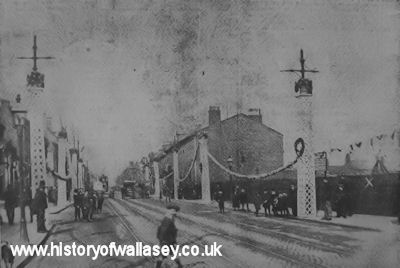 |
Site of the Town Hall, Brighton Street, marked with a white cross on the left. |
There were several years of discussion. They were followed by what became known as the Battle of the Sites.
At a meeting of the Council on May 12th, 1912, the Mayor reported that four sites had been considered – North Meade House, Brighton Street; the corner of Liscard Village (where the old Capitol Building is); White Delph, Rake Lake (opposite the entrance to the cemetery); Marine Promenade, New Brighton.
First the Delph site was selected in preference to the Liscard site by one vote. This decision was reversed by 19 votes to 12. A further amendment was moved in favour of North Meade and was carried, after long argument, by 19 to 17.
This was not the end, however. The claims of Marine Promenade was put forward in another amendment and voting was even 17 to 17.
Only the Mayor’s casting vote retained North Meade, the site of a large house in its own extensive grounds, and with a fine view of the river.
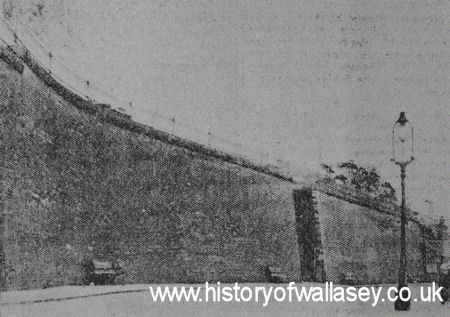 |
The North Meade site from the promenade |
Apart from financial advantages, North Meade appeared to have carried the day because it was said that although the centre of the town could change from Liscard to Wallasey Village, “so long as Wallasey is Wallasey. Egremont and Seacombe will be the main inlets and outlets.”
The chief reason which was given for the selection of the North Meade site were as follows :-
1. Because North Meade was already the property of the ratepayers
2. Because it was on the main throughfare leading to Seacombe Ferry
3. Because it was the only site served by two district tramway routes
4. Because 6,000,000 passengers travelled by these routes
5. Because its erection on the river
front would be another important addition to the attractions of the district
6. Because it is the main business centre of the district and not surrounded by cottage property
7. Because it is the most convenient situation for the transaction of public business
8. Because the oldest, leading and most experienced councillors all favour North Meade site.
The foundation stone was laid by King George V on March 25th, 1914. He came with Queen Mary.
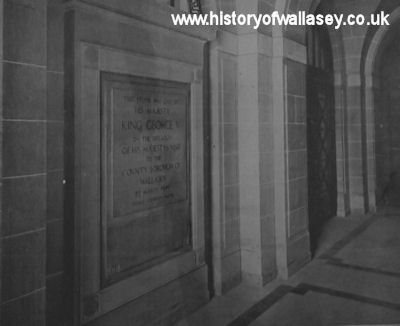 |
The foundation stone |
They drove in an open carriage. A military escort trotted alongside.
In Central Park, watched by a crowd of over 40,000 people, the bearded King pressed an electric lever which set in motion machinery which lowered the foundation stone of the new Town Hall, nearly a mile away in Brighton Street.
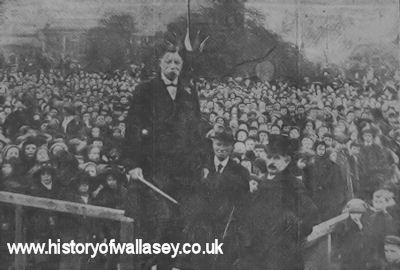 |
Wallasey schoolchildren sing for the King |
A choir of 9,000 schoolchildren sang a special song of welcome before their Majesties drove to Seacombe Ferry.
The Royal Standard broke from the masthead of the ferryboat ‘Daffodil’ as the Royal couple crossed to Liverpool, waving from its flower-decorated decks.
The building was not opened for municipal purposes until November 3rd, 1920. It was from 1916 until 1919 used as a military hospital.
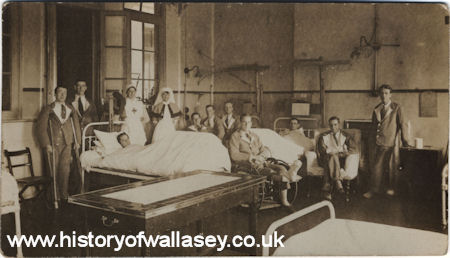 |
Over 300 beds were placed in its rooms and corridors. Over 3,500 wounded men passed through the makeshift wards.
When the long, sad war years came to a close, the people of the town had their first real look inside their civic offices, with a tower rising 180 feet above the promenade and with elaborate statuary.
Built by Messrs. Moss & Sons Ltd., from the design of Messrs. Briggs, Wolstenholme & Thornley, in the Renaissance style, it was faced with Derbyshire stone from the famous quarries at Darley Dale.
The main entrance led on through a fine corridor to a central hall and a grand staircase – executed in white marble, with a bronze handrail supported on wrought-iron balusters.
The large Council Chamber, 50 feet long by 34 feet wide, was panelled in dark oak. Over-looking it, a public gallery with seating for one hundred people.
Wallasey thought it quite some place. “One of the noblest buildings in the North”, said the local newspaper at the time.
Until the night of August 31st, 1940, when the Town Hall was hit by a bomb, the huge Civic Hall housed a very handsome organ. It was for years the pride of the building.
The organ was the last to be built by the famous ‘Father’ Willis, the builder who provided St. George’s Hall, Liverpool, and Sydney Town Hall with their world-famous instruments.
Originally it had been installed in City Hall, Dublin. When the Free State was constituted the organ was put away in cellars.
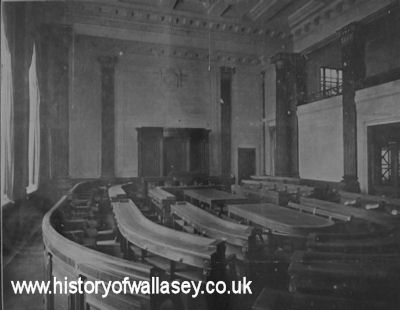 |
The Council Chambers |
Wallasey bought it at a bargain figure of £3,500. It was re-erected in the Town Hall in 1926.
The bomb which destroyed it came the south-west corner of the building, It brought down the roof and sent the organ crashing.
It was a total wreck. It brought only £25 as scrap.
In 1964, at the cost of £130,000, a block of offices were built alongside it.
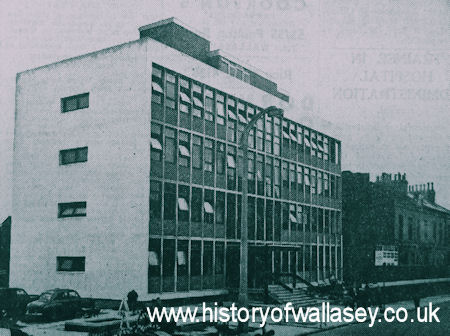 |
The building of the municipal block in Brighton Street |
Featured sites
- Non Gamstop Casinos
- Casino Not On Gamstop
- UK Casinos Not On Gamstop
- Non Gamstop Casinos UK
- Sites Not On Gamstop
- Sites Not On Gamstop
- Casinos Not On Gamstop
- Casinos Not On Gamstop
- Casinos Not On Gamstop
- Non Gamstop Casino UK
- Casinos Not On Gamstop
- Non Gamstop Casino
- UK Online Casinos Not On Gamstop
- UK Online Casinos Not On Gamstop
- Non Gamstop Casinos
- Casino Sites Not On Gamstop
- Casinos Not On Gamstop
- Casinos Not On Gamstop
- Best Betting Sites
- Casinos Not On Gamstop
- Gambling Sites Not On Gamstop
- Betting Sites That Are Not On Gamstop
- Non Gamstop Casinos UK
- UK Online Casinos Not On Gamstop